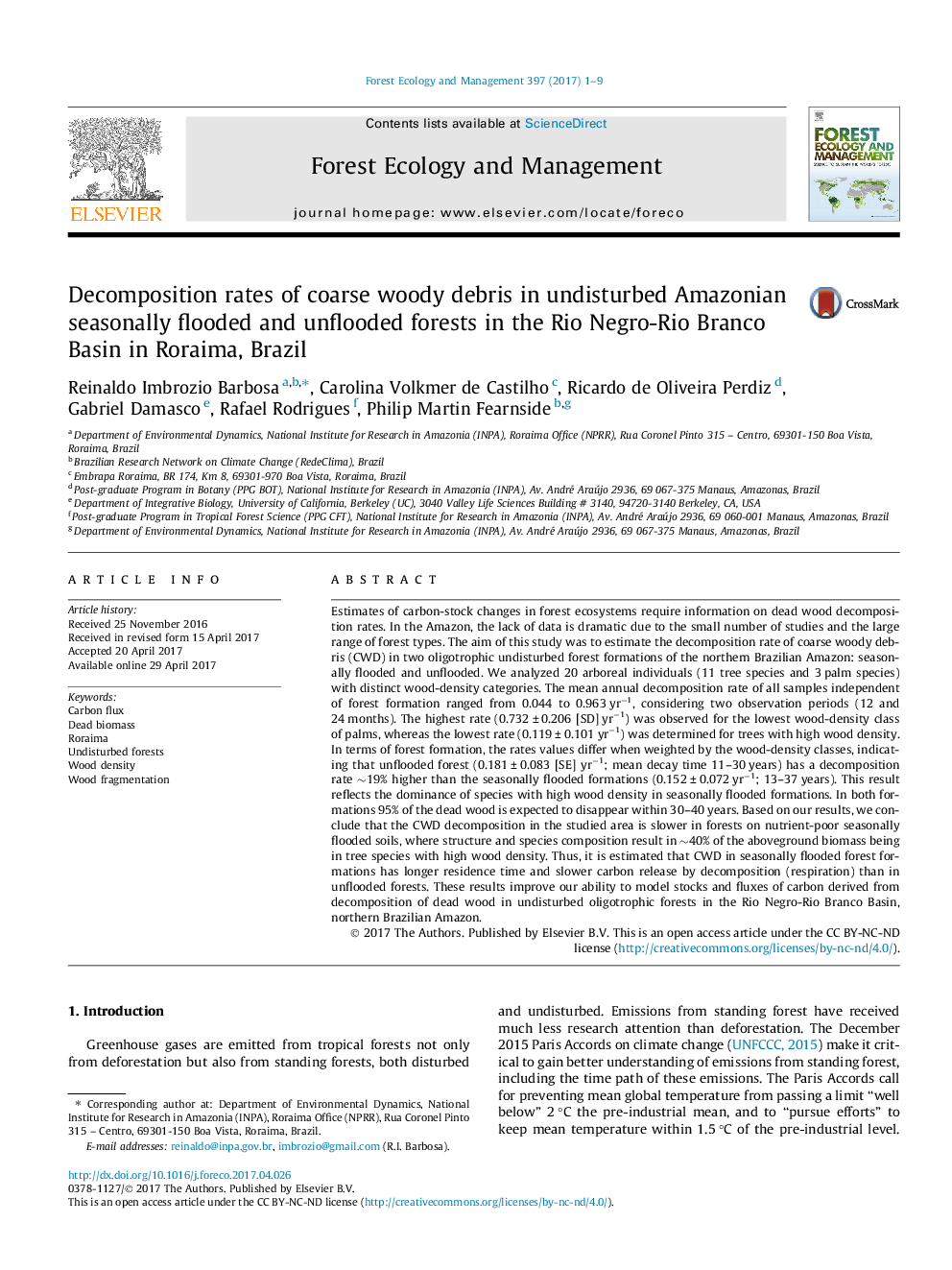| کد مقاله | کد نشریه | سال انتشار | مقاله انگلیسی | نسخه تمام متن |
|---|---|---|---|---|
| 6459339 | 1421361 | 2017 | 9 صفحه PDF | دانلود رایگان |
- Coarse woody debris (CWD) decomposition was measured in flooded and unflooded forests.
- Exponential models explain relationship between decomposition rate and wood density.
- Lower CWD decomposition rate was found in seasonally flooded forest.
- Residence time estimated for CWD to disappear in both formations is just under 40Â years.
Estimates of carbon-stock changes in forest ecosystems require information on dead wood decomposition rates. In the Amazon, the lack of data is dramatic due to the small number of studies and the large range of forest types. The aim of this study was to estimate the decomposition rate of coarse woody debris (CWD) in two oligotrophic undisturbed forest formations of the northern Brazilian Amazon: seasonally flooded and unflooded. We analyzed 20 arboreal individuals (11 tree species and 3 palm species) with distinct wood-density categories. The mean annual decomposition rate of all samples independent of forest formation ranged from 0.044 to 0.963 yrâ1, considering two observation periods (12 and 24 months). The highest rate (0.732 ± 0.206 [SD] yrâ1) was observed for the lowest wood-density class of palms, whereas the lowest rate (0.119 ± 0.101 yrâ1) was determined for trees with high wood density. In terms of forest formation, the rates values differ when weighted by the wood-density classes, indicating that unflooded forest (0.181 ± 0.083 [SE] yrâ1; mean decay time 11-30 years) has a decomposition rate â¼19% higher than the seasonally flooded formations (0.152 ± 0.072 yrâ1; 13-37 years). This result reflects the dominance of species with high wood density in seasonally flooded formations. In both formations 95% of the dead wood is expected to disappear within 30-40 years. Based on our results, we conclude that the CWD decomposition in the studied area is slower in forests on nutrient-poor seasonally flooded soils, where structure and species composition result in â¼40% of the aboveground biomass being in tree species with high wood density. Thus, it is estimated that CWD in seasonally flooded forest formations has longer residence time and slower carbon release by decomposition (respiration) than in unflooded forests. These results improve our ability to model stocks and fluxes of carbon derived from decomposition of dead wood in undisturbed oligotrophic forests in the Rio Negro-Rio Branco Basin, northern Brazilian Amazon.
Journal: Forest Ecology and Management - Volume 397, 1 August 2017, Pages 1-9
